If you're someone who gets plant envy when scrolling through social media sites like Instagram and Tik-Tok, it's time to add one of these rare houseplants to your home (and your feed). But warning, these hard-to-find, unique indoor plants can get pretty pricey. So before purchasing on looks alone, you'll want to be sure the plant is suitable for your indoor growing conditions. These rare, exotic, and unusual plants typically do require a bit of special care to thrive.
The 20 Most Sought-After Rare Houseplants
Tricolor Arrowhead Plant
Syngonium Podophyllum Red Spot
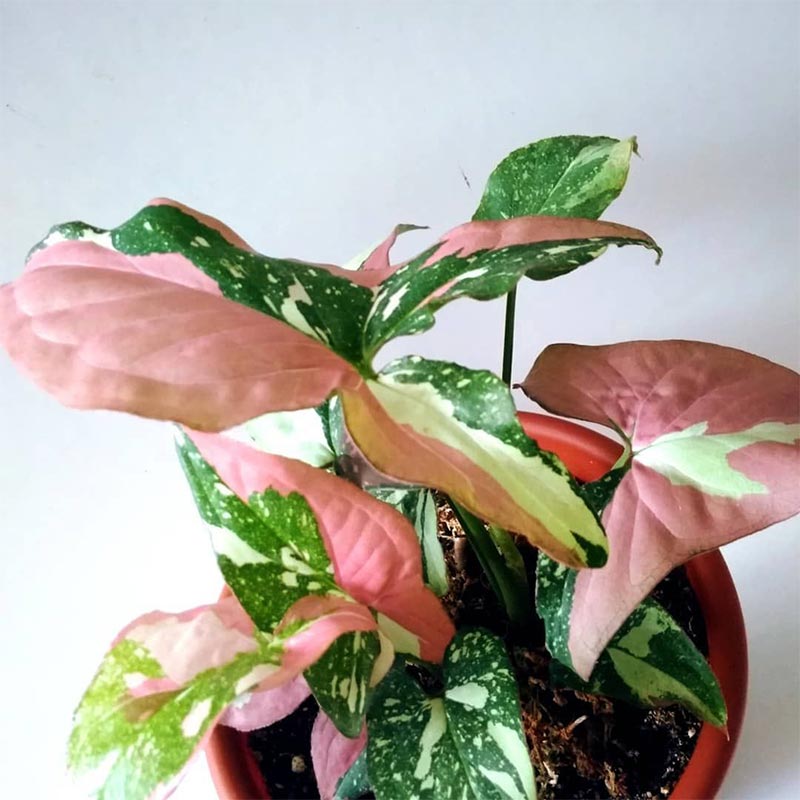
The Syngonium Red Spot, also known as an arrowhead plant, is best-known for the unique pink, green, and white spots variegation on its arrow-shaped leaves. As it matures, it'll start to grow vines, making it a great choice for an indoor hanging basket.
Plant Family— Araceae
Sunlight Needs— Prefers medium-light but can tolerate low-light conditions. Not suited for more than three hours of direct sunlight.
Water Requirement— Weekly
Check To See Availability
White Variegated Monstera
Monstera Deliciosa Albo Variegata
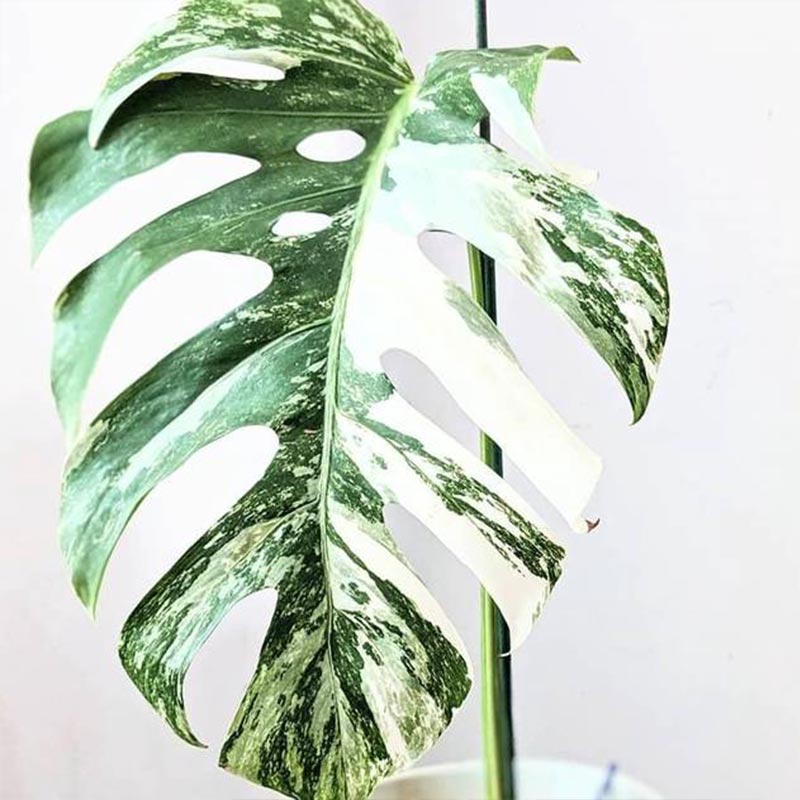
Thanks to its white marble leaves, the Monstera Deliciosa Albo Variegata is undoubtedly one of the most beautiful monstera plant varieties. Like other swiss cheese plants, it's easy to grow and relatively low maintenance. The uniquely perforated leaves and the vibrant contrast color are strikingly beautiful while offering a jungle vibe to any space.
Why is this plant variety so hard to find? Monstera Deliciosa Albo Variegata's marbled or half-moon appearance is caused by a mutation in the plant's chlorophyll formation, making them rare to find. The white variegation tends to be more delicate than its green counterparts. They produce less chlorophyll and require more sunlight, and grow slower. This makes there be fewer new plants.
Plant Family— Araceae
Sunlight Needs— Prefers medium indirect light. Not suited for intense direct sun.
Water Requirement— Weekly
Check To See Availability
Variegated Monstera 'Thai Constellation'
Monstera Deliciosa' Thai Constellation'
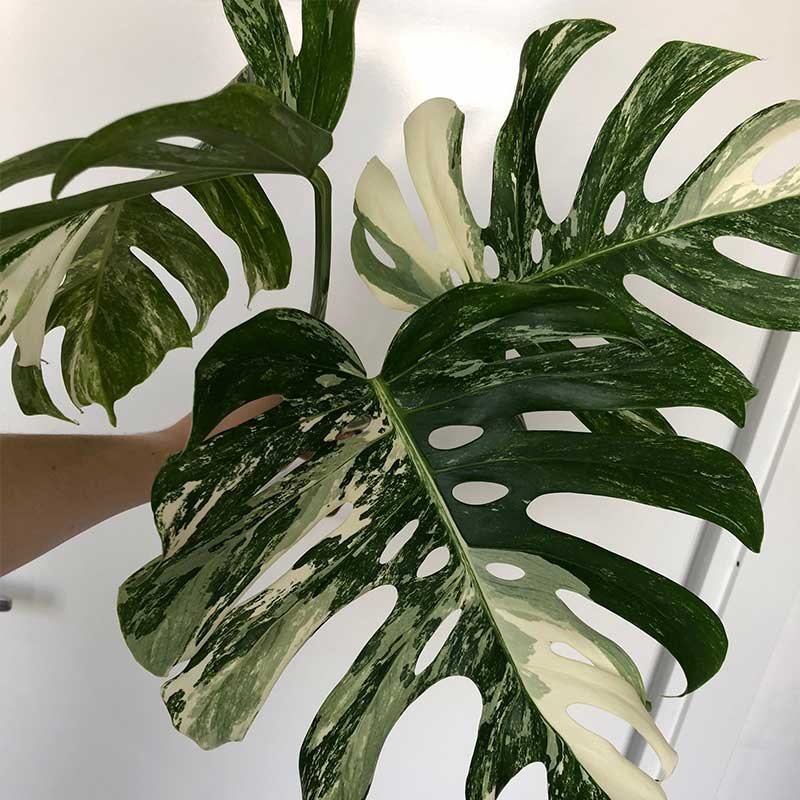
This mesmerizing swiss cheese plant gets its name from the marbled, constellation-like pattern on its large leaves. Like other monsteras, the plant's leaves will eventually split and form holes as the plant matures. But unlike the other variegated Monstera types, this species was created by a lab in Thailand.
Why is monstera Thai constellation so rare? This species is lab-created, which supplies the cultivar to buyers around the world. Like Monstera Deliciosa Albo Variegata, these species require a certain skill level to grow and grow very slowly. And combined with the high demand, you have got a rare plant that is tough to find.
Plant Family— Araceae
Sunlight Needs— Prefers medium indirect light. Not suited for intense direct sunlight.
Water Requirement— Weekly
Check To See Availability
Peruvian Form Monstera Obliqua
Monstera Deliciosa Obliqua
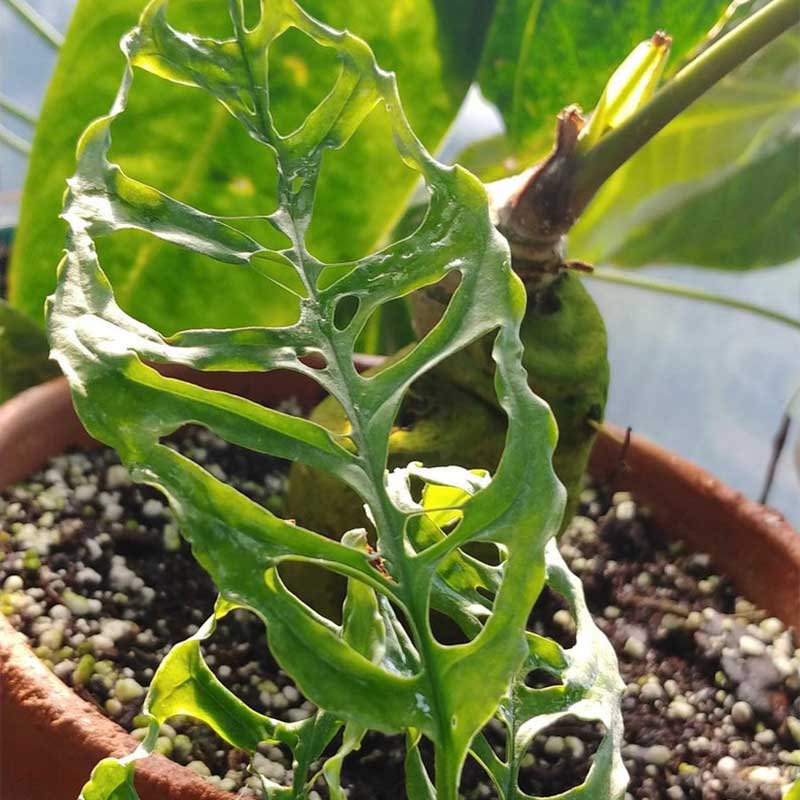
The Peruvian form of the Monstera Obliqua is one of the most elusive, most expensive, and most beautiful rare houseplants you can add to your home. Its most unique characteristic is its paper-thin leaves, which typically are more hole than the leaf. They look very similar to monstera adansonii. Unfortunately, many garden centers have mislabeled the two. Now, the major difference between the two is that obliqua leaves are extremely fenestrated. In fact, about 90% of mature obliqua leaves are empty space. Another difference between the two species is obliqua leaves are much thinner and more delicate, whereas adansonii is sturdier and textured.
Plant Family— Araceae
Sunlight Needs— Prefers medium indirect light. Not suited for intense direct sunlight.
Water Requirement— Weekly
Check To See Availability
Variegated Monstera 'Monkey Leaf'
Monstera Adansonii Variegata Archipelago
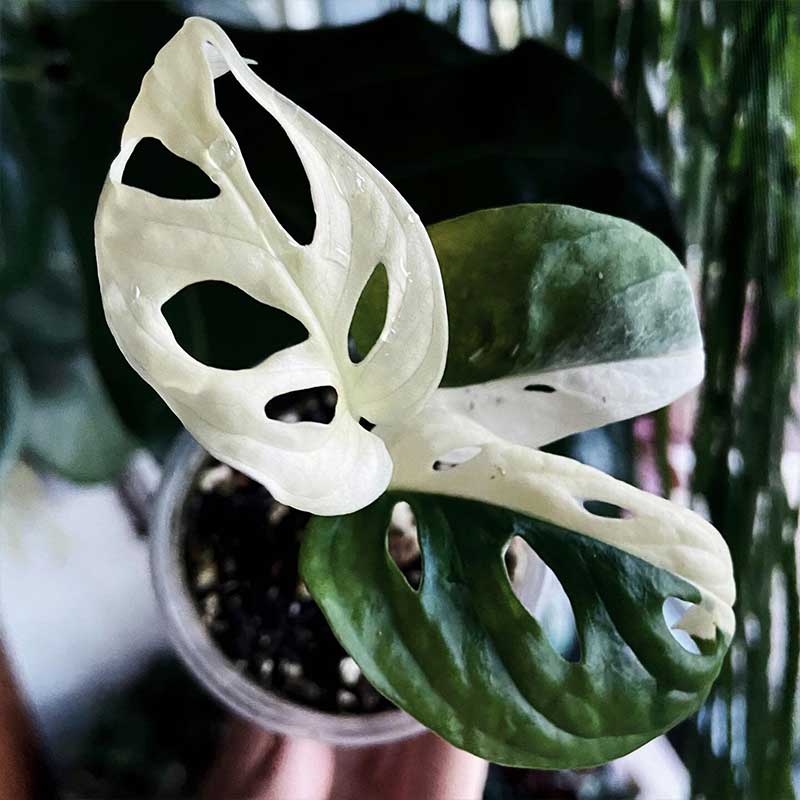
The Variegated Money Leaf is often confused with the super-rare Peruvian form Monstera Deliciosa Obliqua. Similar to the Monstera Obliqua, the Monstera Adansonii features sizable holes in its white-and-green swirled leaves.
Why is this species so hard to find? Because of their slow growth rate and high demand, this makes them rare and expensive.
Plant Family— Araceae
Sunlight Needs— Prefers indirect light. Not suited for direct sunlight.
Water Requirement— Weekly
Check To See Availability
Yellow Variegated Monstera
Monstera Borsigiana Aurea
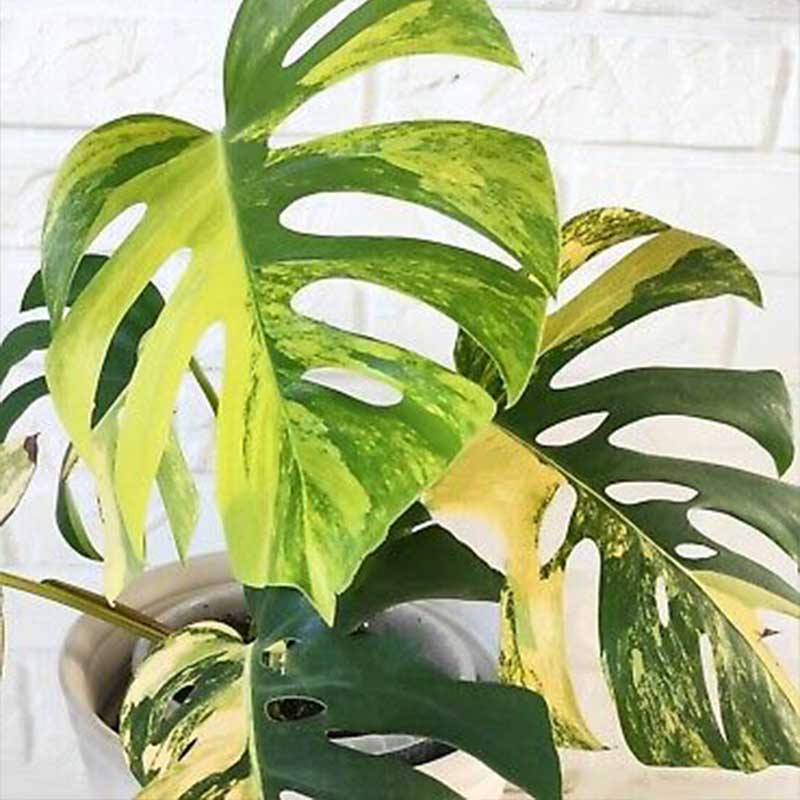
The Monstera Borsigiana Aurea is a yellow variegated Monstera plant that grows well in apartment settings. Not only is it beautiful, but it's also a fast-grower that's easy to care for and doesn't require frequent watering.
Why is Monstera Borsigiana Aurea so rare? This species of plant has two kinds of plant tissue presented, which are rare to find in nature. The yellow can be caused by lack of chlorophyll, mutation, or caused by viral infection. Typically this type of variegated plant tends to be more fragile and usually dies out in nature, making them rare to find.
Plant Family— Araceae
Sunlight Needs— Prefers bright indirect light
Water Requirement— Weekly
Check To See Availability
'Silver Cloud' Philodendron
Philodendron 'Mamei Silver'
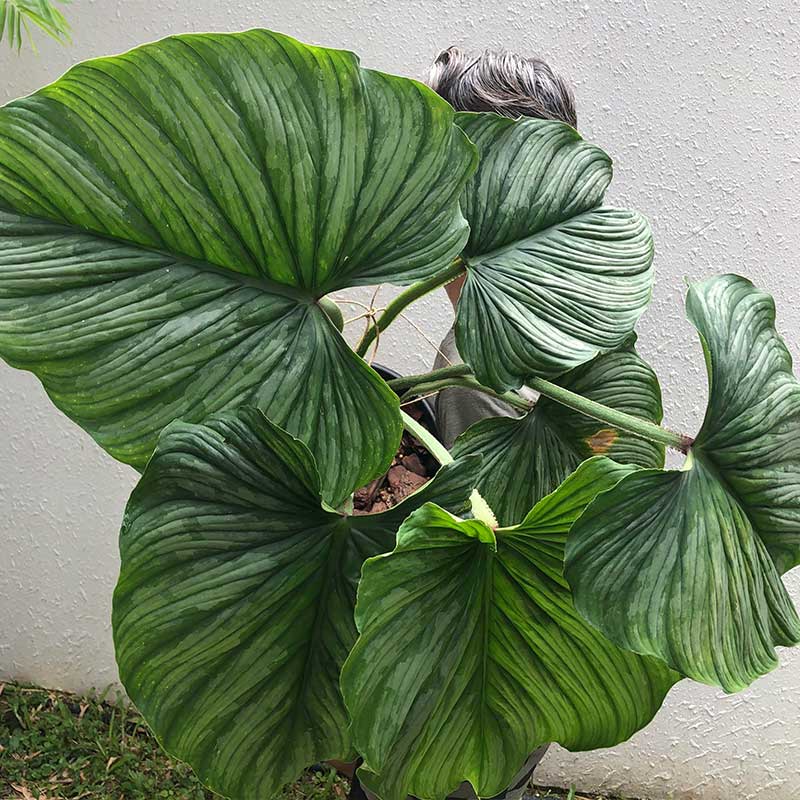
The 'Mamei Silver' Philodendron earns its name from the silvery variegation on its sizable heart-shaped leaves. It's often called the silver cloud, thanks to its stunning foliage display.
Even though Silver Cloud Philodendrons are rare, they are easy to grow indoors. This species is hard to find due to the use of "tissue culture" in the propagation of Philodendron. As a result, they often don't achieve the size nor the beauty of the wild specimen.
Plant Family— Araceae
Sunlight Needs— Prefers bright indirect light
Water Requirement— Weekly or when half of the soil is dry
Check To See Availability
'Milk Confetti' Syngonium
Syngonium Podophyllum
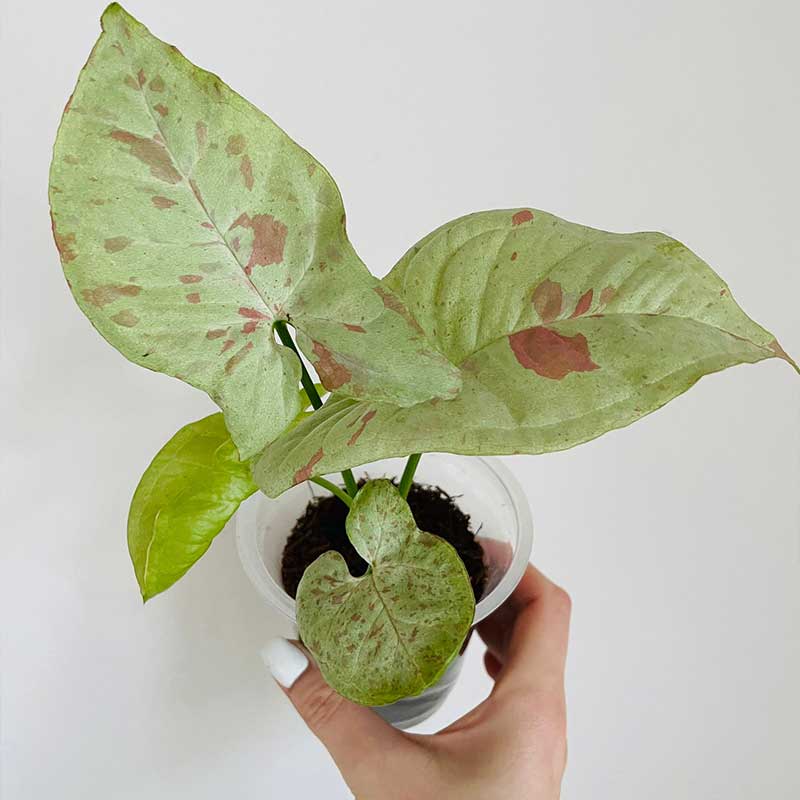
The Syngonium' Milk Confetti' is one of the newest and most sought-after Syngonium Podophyllum cultivars. This eye-catching herbaceous evergreen boasts speckled pink and light green leaves that stand out amongst the sea of boring green houseplants at your local garden center.
Plant Family— Araceae
Sunlight Needs— Prefers part shade
Water Requirement— Weekly
Check To See Availability
'White Princess' Philodendron
Philodendron Erubescens' White Princess'
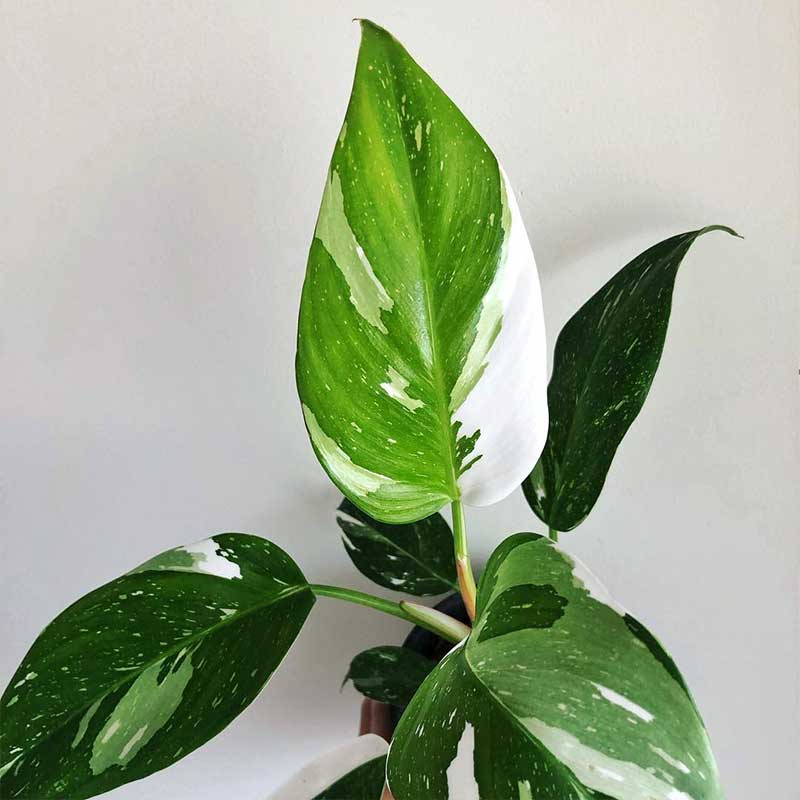
The Philodendron Erubescens is a rare houseplant that originates from the rainforests of South America. It's referred to as the 'White Princess' Philodendron due to the white variegated splotches on its pointy green leaves and is often confused with the 'White Wizard' and 'White Prince' varieties.
Plant Family— Araceae
Sunlight Needs— Prefers bright indirect sunlight
Water Requirement— Weekly to twice monthly
Check To See Availability
Black Gold Philodendron
Philodendron Melanochrysum
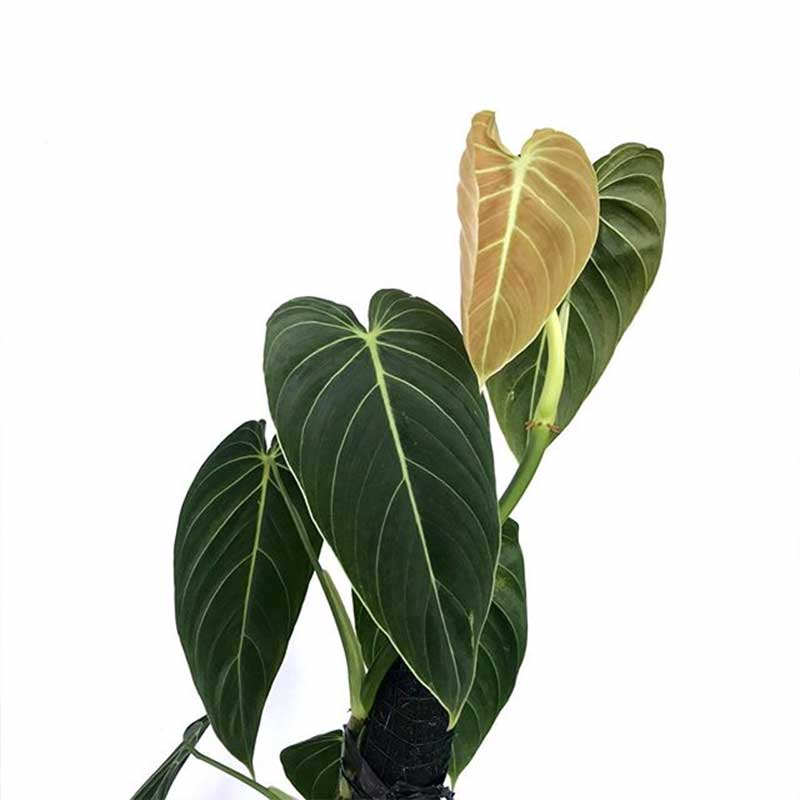
The Philodendron Melanochrysum, better known as the Black Gold Philodendron, features deep green leaves that are almost black with a velvety soft texture with yellow veins. While it is relatively easy to care for, it does require a totem or pole to climb.
Plant Family— Araceae
Sunlight Needs— Prefers bright indirect sunlight
Watering Frequency— When the top inch of soil is dry to the touch
Check To See Availability
'Gloriosum' Philodendron
Philodendron Gloriosum
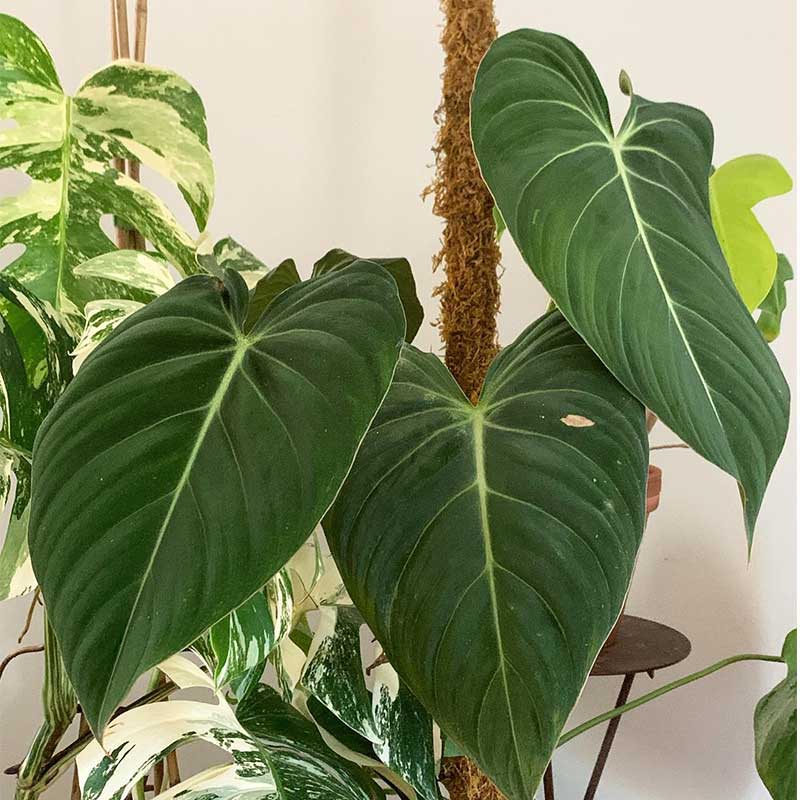
This super-rare Philodendron is an exciting addition to any indoor garden. Its heart-shaped, dark green leaves aren't just gorgeous to look at, they're velvety to the touch. The climbing plant is known to sprawl, so you'll want to place it somewhere with room to spread.
Plant Family— Araceae
Sunlight Needs— Prefers bright indirect light
Water Requirement— Only when the top inch of soil is dry to the touch
Check To See Availability
Queen Anthurium
Anthurium Warocqueanum
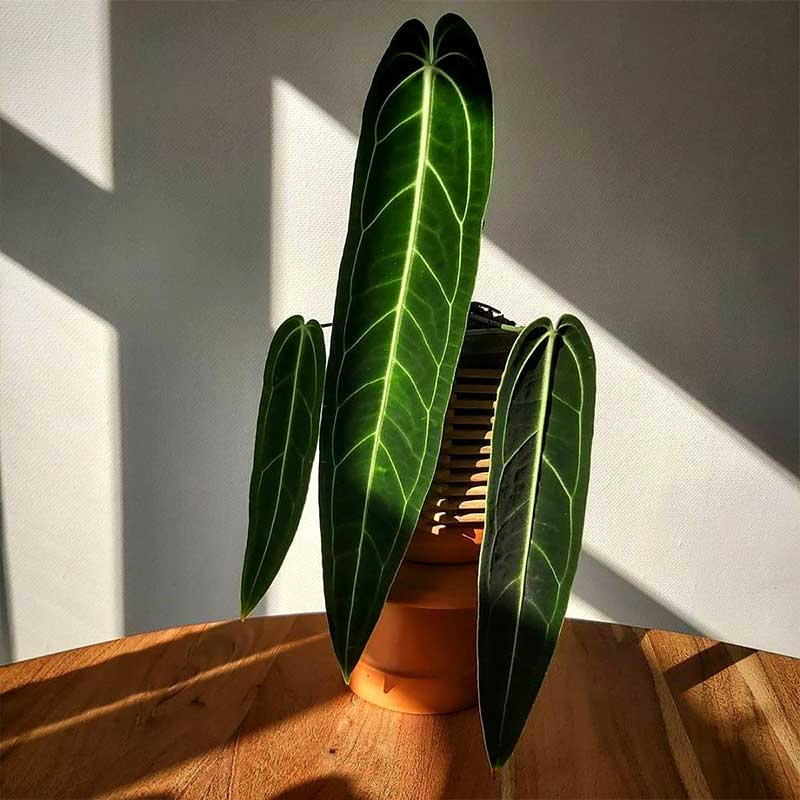
The Queen Anthurium plant is one of the most impressive species of the genus. Its thick, dark green velvety leaves can grow up to four feet long with proper care, though leaf shape and color can vary based on growing conditions. It's important to note that it's one of the more difficult houseplants to care for, as they require high humidity above 70%. If you are planning on purchasing one, consider investing in a humidifier.
Plant Family— Araceae
Sunlight Needs— Prefers medium to bright indirect light, avoiding direct sunlight.
Watering Frequency— Weekly with frequent misting
Check To See Availability
Variegated Arrowhead Vine
Syngonium Podophyllum Albo Variegatum
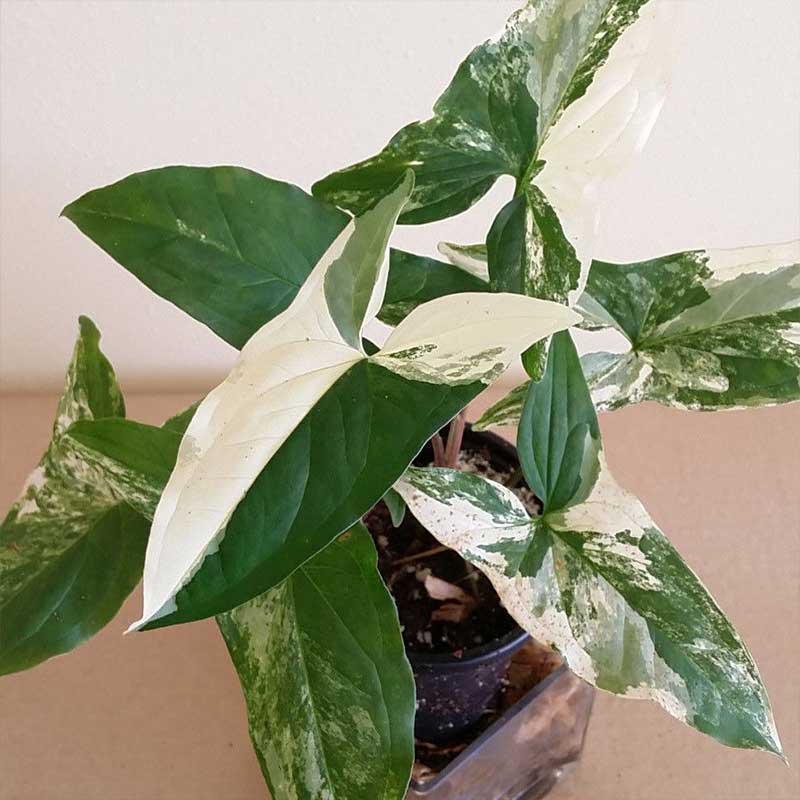
Compared to other houseplants, the Variegated Arrowhead Vine grows quickly and doesn't require much care. Its thin arrow-shaped leaves come in varying shades of green with white marbling and pink-tinted stems. This plant is a true unicorn in the plant world.
Plant Family— Araceae
Sunlight Needs— Prefers partial sun or bright, indirect light
Water Requirement— Weekly, mist frequently
Check To See Availability
Philodendron 'Golden Dragon'
Thai Hybrid of Philodendron Bipennifolium
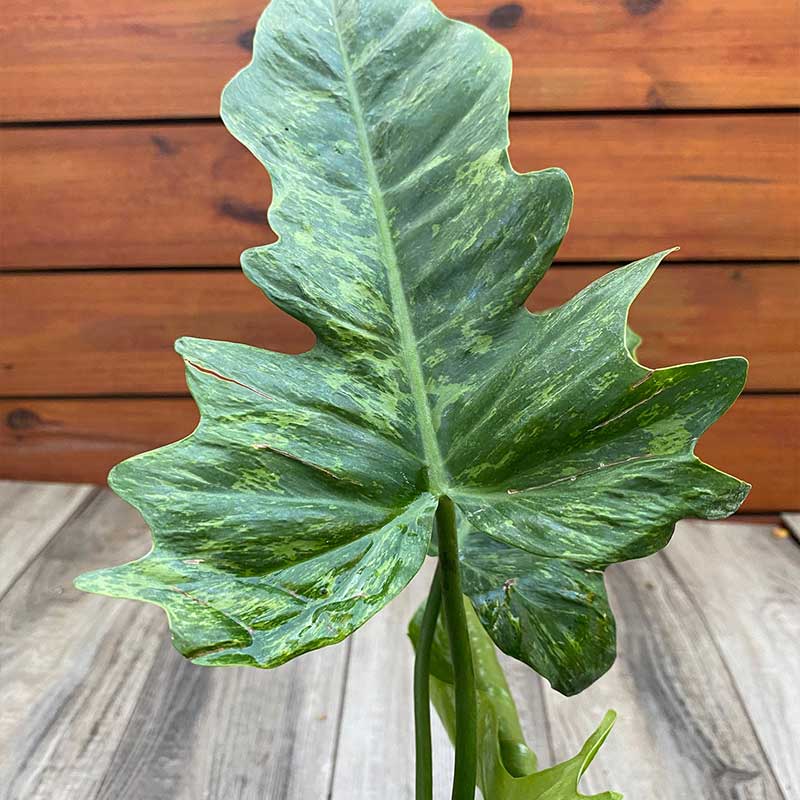
If you're a fan of houseplants with unique leaf shapes, you'll love the climbing Philodendron' Golden Dragon.' It's wavy arrow-shaped leaves can grow to be quite large and have gorgeous variegation.
Plant Family— Araceae
Sunlight Needs— Prefers bright indirect light
Water Requirement— When soil is mostly dry
Check To See Availability
Monnierara Millennium Magic 'Witchcraft'
Catanoches Midnight Jem And Mormodes Sinuata
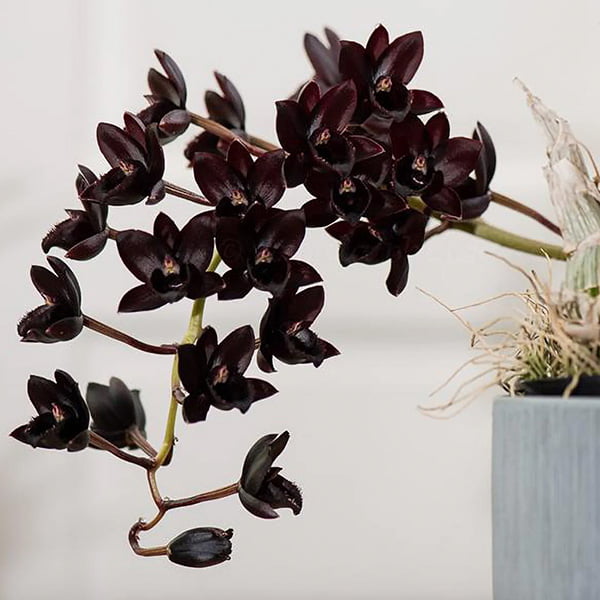
Magic 'Witchcraft' orchid is one of the blackest orchids to date! A hybrid from the three orchid families of Catasetum, Cycnoches, and Mormodes. The flowers have a deep purple, black, blue, and brown tint and are very waxy. While this statement plant looks dark and mysterious, its bloom has a nice subtle fragrance after it opens. With plenty of heat, water, and fertilizer, this ornamental plant will guarantee to be a showstopper wherever you display it.
Plant Family— Catasetum, Cycnoches and Mormodes
Sunlight Needs— Medium light
Water Requirement— Require heavy watering during growing season.
Check To See Availability
Red Butterfly Wing Plant
Christia vespertilionis

The Christia vespertilionis, also known as the Red Butterfly Wing Plant or the Mariposa Plant, is without a doubt one of the most stunning rare houseplants in the world. Its triangular, purplish-red leaves are said to resemble butterflies taking flight.
Plant Family— Fabaceae (Leguminosae)
Sunlight Needs— Prefers medium light
Water Requirement— Weekly, the soil should stay moist but not soggy
Check To See Availability
Variegated Billietiae
Philodendron Billietiae
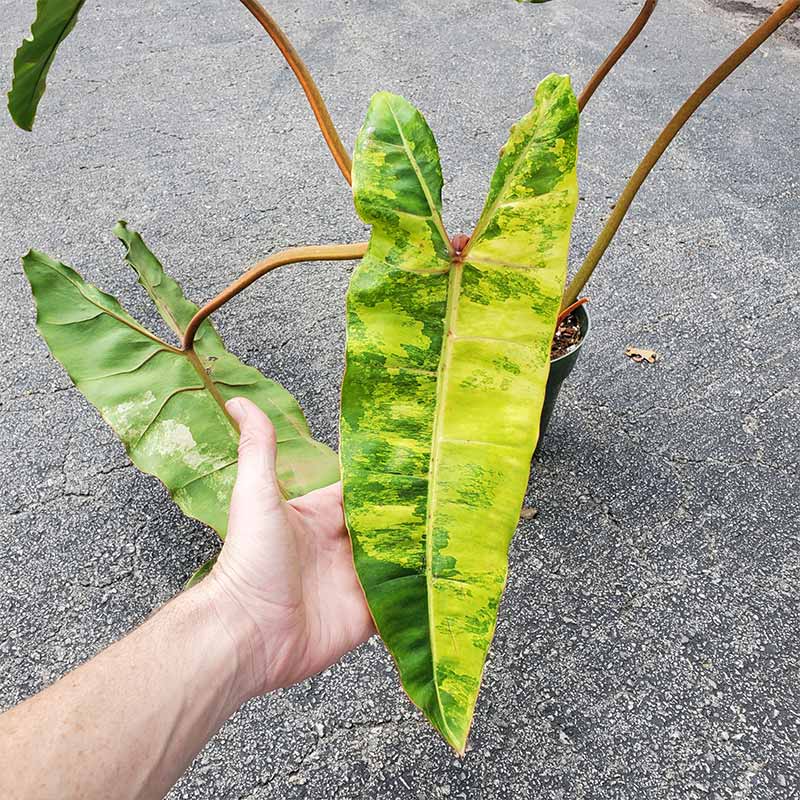
The variegated Philodendron Billietiae is a vine climber with glossy, elongated heart-shaped leaves and long orange-ish red stems. And unlike many rare houseplants, the show-stopping plant is easy to care for. Though its leaves will stay a manageable size when grown indoors, they can grow up to three feet long in the wild!
Plant Family— Araceae
Sunlight Needs— Requires bright, indirect light
Water Requirement— Twice monthly or whenever the top few inches of soil are completely dry
Check To See Availability
Philodendron Pink Princess
Philodendron erubescens
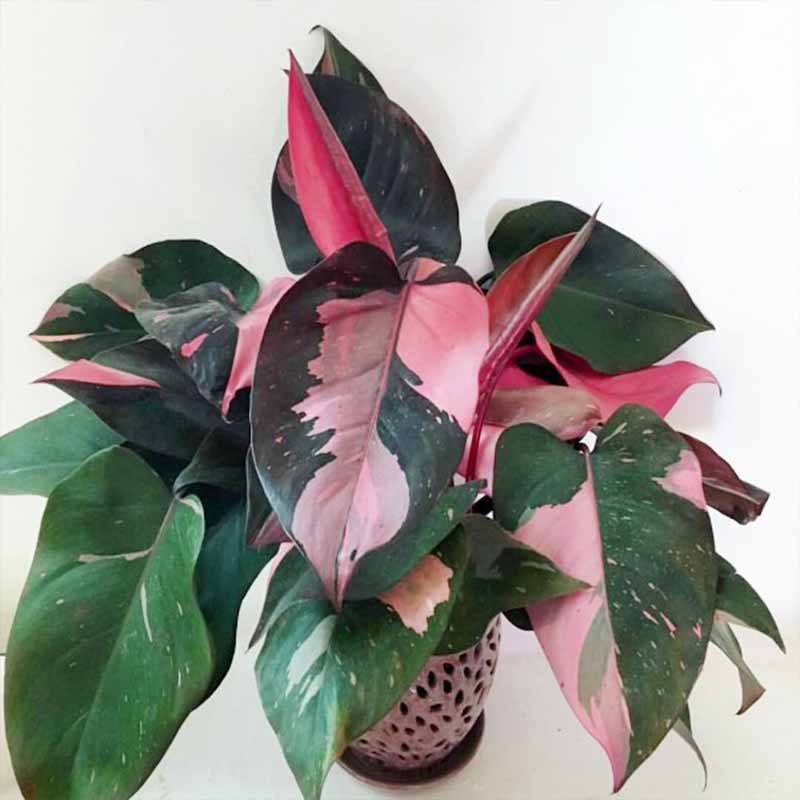
Philodendron pink princess is the ultimate Instagram plant. But, with the unusual and beautiful color in heart-shaped leaves, it can come with triple-digit price tags. With the streaks of bubblegum pink and rare black leaf philodendrons, the demand for this photogenic Philodendron exploded in the recent year!
If you are particular about the unusual pattern and look, check out this shop.
Plant Family— Araceae
Sunlight Needs— Bright, indirect light
Water Requirement- Water when the top 1-2" of soil feel dry
Check To See Availability
Twisted Cactus
Cereus Forbesii Spiralis
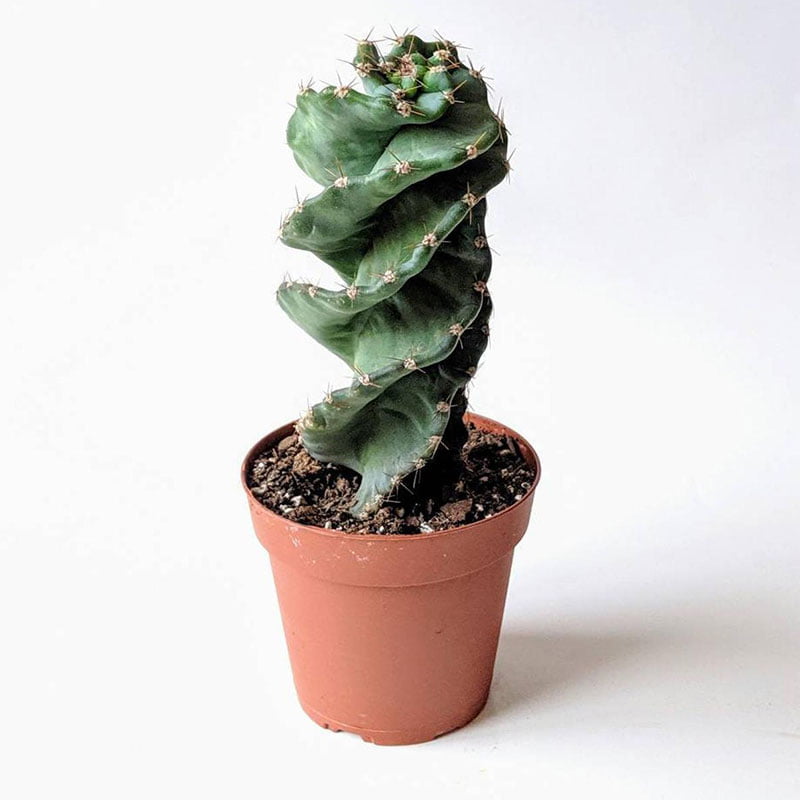
Cereus Forbesii Spiralis is known as twisted cactus, as you can see why it got its name. It is cool and funky, and it has a blue-green color that can produce delicate white or pink flowers. This little gem is easy to care for and a great option for beginners. It thrives in the cactus soil mix with warm temperature, little water, and bright light.
Plant Family — Cactaceae
Sunlight Needs — Prefers bright light and is happy with some direct sunlight once established, but not too much
Water Requirement- Water sparingly once the soil has dried out. Drought tolerant.
Check To See Availability
Factors To Consider Before Purchasing These Rare Indoor Plants
Space
Before purchasing any plants, consider where the new plant will live. Instead of squeezing plants between or behind some furniture, make sure the plant is in an area with good airflow. Good airflow will ensure a healthier and longer living plant.
Humidity
Many of these rare tropical plants (like Philodendron) require high moisture levels and do not like dry air or draft. You will need to mist them daily to ensure proper moisture level or invest in a humidifier. If this is too much work for you, consider choosing a plant family that requires less humidity.
Temperature
Temperature is a critical factor in plant wellness. Air conditioning and heater can cause the plant and soil to dry out slowly or quickly than normal. In addition, some plants are temperature sensitive. If temperatures dip or rise, it can cause the plant to grow slower or leaves to curl.
Light
Light is another important factor for plants to thrive. Some plants enjoy full sunlight, while others enjoy partial shade. So before purchasing these rare houseplants, it's important to know how much sunlight the spot you picked gets.
Pet Friendly
Some houseplants can be toxic to pets. If you have a fur baby at home, search for pet-friendly plants.
How To Get Your Hands On These Rare And Unusual Houseplants
Due to high demand, these rare houseplants are hard to find. Most likely, you won't be able to find them at your local nursery or plant stores. Your best bet to get your hand on one of these rare plants is to purchase from Etsy or eBay. If you are lucky, you may be able to find rooted plants or cuttings.

